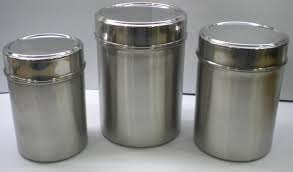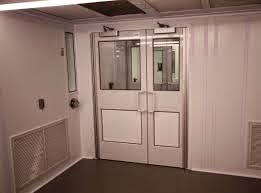Cleanrooms are used in practically every industry where small particles can adversely affect the manufacturing process. They vary in size and complexity, and are used extensively in industries such as semiconductor manufacturing, pharmaceuticals, biotech, medical device and life sciences, as well as critical process manufacturing common in aerospace, optics, military and Department of Energy.

A cleanroom is any given contained space where provisions are made to reduce particulate contamination and control other environmental parameters such as temperature, humidity and pressure. The key component is the High Efficiency Particulate Air (HEPA) filter that is used to trap particles that are 0.3 micron and larger in size. All of the air delivered to a cleanroom passes through HEPA filters, and in some cases where stringent cleanliness performance is necessary, Ultra Low Particulate Air (ULPA) filters are used.
In cleanrooms, particulate concentration changes over time — from the construction and installation of equipment to its operational status. ISO has introduced three cleanroom classification standards: as-built, at-rest and operational.
-
as built : condition where the installation is complete with all services connected and functioning but with no production equipment, materials, or personnel present
-
at rest : condition where the installation is complete with equipment installed and operation in a manner agree upon by the customer and supplier, but with no personnel present
-
operational : condition where the installation is functioning in the specified manner, with the specified number of personnel and working in the manner agreed upon
Positive Pressure
Cleanrooms are designed to maintain positive pressure, preventing “unclean” (contaminated) air from flowing inside and less-clean air from flowing into clean areas. The idea is to ensure that filtered air always flows from cleanest to less-clean spaces. In a multi-chambered cleanroom, for instance, the cleanest room is kept at the highest pressure. Pressure levels are set so that the cleanest air flows into spaces with less-clean air. Thus, multiple pressure levels may need to be maintained.
A differential air pressure of 10 – 15 pascal is recommended between spaces. In order to ensure that pressure differentials remain constant when doors are opened, or other events occur, control systems must be in place.
Laminar and Turbulent Air Flow
ISO 5 / Grade A / Class 100 and cleaner facilities rely on unidirectional, or laminar, airflow. Laminar airflow means that filtered air is uniformly supplied in one direction (at a fixed velocity) in parallel streams, usually vertically. Air is generally recirculated from the base of the walls back up to the filtering system.
ISO 6 / Grade B / Class 1,000 and above cleanrooms generally utilize a non-unidirectional, or turbulent, airflow. This means the air is not regulated for direction and speed. The advantage of laminar over turbulent airflow is that it provides a uniform environment and prevents air pockets where contaminants might congregate.
Required Testing (ISO 14644-2)
These are following test to be performed for qualification of clean rooms;
Particle Count Test
Air Pressure Difference Airflow
Installed Filter Leakage
Containment Leakage
Recovery
Airflow Visualization
Microbial Monitoring (Refer EU GMP Annex – 1, USFDA guidelines Aseptic Processing — September- 2004, USP 1116)
Cleanroom monitoring on regular basis:
First identify what the risks are for product and process. Also, it is need to understand the design intention of the cleanroom. This is necessary, as we want to choose the right instrument for the application. A class 10,000 (ISO Class 7) cleanroom would not be monitored effectively with a 0.1 micron. Using a 0.3 or 0.5 particle counter would be a better choice.
-
Determine critical locations (locations where contamination can have an effect on the product or a large number of products)
-
Determine busy locations (locations where the product is moving or being manufactured).
-
Make an assessment of the cleanroom particle data during the operational state. Collecting data in the operational state (when manufacturing is actually occurring) is important to determine the locations where you are at risk.
-
A contamination monitoring system will be able to track, record and alarm when out of control limits are reached and/or exceeded.
Common audit observation on clean rooms:
Smoke study has not been performed adequately. Actual aseptic interventions have not been simulated in dynamic phase.
Filter integrity test not been performed on regular basis. No raw data available for filter integrity test.
Environmental monitoring; settle plate, contact plate, personnel monitoring, air sampling for viable and non-viable count not been performed for every batch manufacturing duration. Raw data are not available for non-viable particle count. Environmental monitoring were not performed during media fill.
Pressure differential not monitored; suitable instrument (pressure gauge) is not installed for monitoring.
Door are not capable enough to hold pressure. Air balancing not performed adequately.
Aseptic area was not sanitized with validated disinfectant.
HVAC breakdown is not simulated during media fill run.
Non-sterilized tools were used in aseptic area.
Equipment used in manufacturing, processing, packing or holding of products are not located adequately to maintain uninterrupted air flow.
Cleanrooms are very much required to maintain aseptic conditions required to manufacturing of Sterile medicines. Therefore, it is very essential to fulfill the regulatory requirements and recommendations.
Written by:









